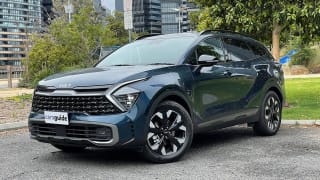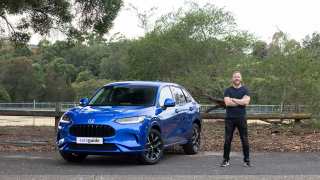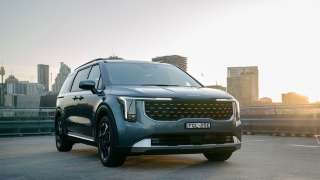Rather surprisingly for some, yes, especially if you desire a German SUV with premium-brand aspirations.
The MY22 Tiguan range kicks off from $41,490 before on-road costs for the 110TSI Life with a 110kW/250Nm 1.4-litre turbo petrol engine driving the front wheels via a seven-speed dual-clutch transmission (DCT) dubbed DSG in VW-speak. No manual gearbox is available, sadly.
Our Tiguan is the least expensive of the all-wheel-drive models, the 132TSI Life 4Motion with a 132kW/320Nm 2.0-litre four-cylinder turbo powertrain upgrade. From $45,490 (MSRP), our car had a $5000 Luxury pack and $800 metallic paint - Dolphin Grey in this case - pushing the as-tested price beyond $50K before on-road costs.
Standard Life items include LED headlights, keyless entry/start, an 8.0-inch touchscreen offering satellite navigation, voice/gesture control, App-Connect including wired and wireless Apple CarPlay/Android Auto phone mirroring, digital instrumentation, three-zone climate control with rear-seat controls and outlets, electric tailgate, automatic headlights and wipers, heated/electrically folding exterior mirrors and 18-inch alloy wheels (with a space-saver spare).

On the safety front all Tiguans include seven airbags, autonomous emergency braking (AEB) with pedestrian/cyclist monitoring, lane-departure warning and keep, adaptive cruise control with full stop/go, rear cross-traffic alert/assist, park assist (that steers the car automatically when manoeuvring into a spot), front/rear parking sensors, driver-fatigue monitor, rear-view camera, high-beam assist and “360° Proactive Occupant Protection” that provides additional braking post-impact amongst other accident-mitigation precautions.
Luxury pack goodies include a three-spoke heated steering wheel with paddle shifters, bolstered ‘sports’ front seats with heating, electric driver’s seat adjustment (including for lumbar support) with memory settings, panoramic sunroof, leather upholstery and more.

For items like adaptive dampers, matrix LED headlights, sequential indicators, a 9.2-inch touchscreen, ambient interior lighting, tinted rear glass, ritzier trim and19-inch alloys, you’ll need to step up to the Elegance 162TSI grade from $52,990, complete with a healthy 162kW/350Nm 2.0-litre engine up-tune.
The Elegance can also be had with a 147kW/400Nm 2.0-litre turbo-diesel for $1500 extra, a $2500 Sound and Vision pack ushering in a head-up display, Harmon Kardon audio upgrade and 360-degree surround-view camera, and a $3000 R-Line pack. The latter brings a body kit with unique bumpers, stainless steel pedals, black cabin trim, variable-ratio steering and a steering wheel with haptic feedback buttons, though the so-called ‘easy open/close’ aspect of the electric tailgate is withdrawn for some reason. Maybe it’s due to the restyled rear bumper.
Returning to our 132TSI Life 4Motion with Luxury pack, it is up against similarly-priced and powered but (largely) better-equipped AWD rivals like the $51,000 Hyundai Tucson Highlander Turbo N-Line, $50,190 Mazda CX-5 GT, $49,370 Kia Sportage GT-Line 1.6T, $48,000 Toyota RAV4 Cruiser Hybrid and $44,190 Subaru Forester 2.5i-S.
Against most of these, obvious omissions in the VW include a head-up display and digital radio, but it certainly doesn’t look or feel left behind from an ambience or quality point of view; in fact, even the lowly 132TSI manages to better reduce the gap between mainstream and luxury branded like-sized alternatives such as the Audi Q5, BMW X3 and Lexus NX.
Consistently buoyant sales suggest buyers are willing to pay a little extra for the Tiguan’s premiumnness, even at the cost of some features. After a week behind the wheel of one, we see why.























